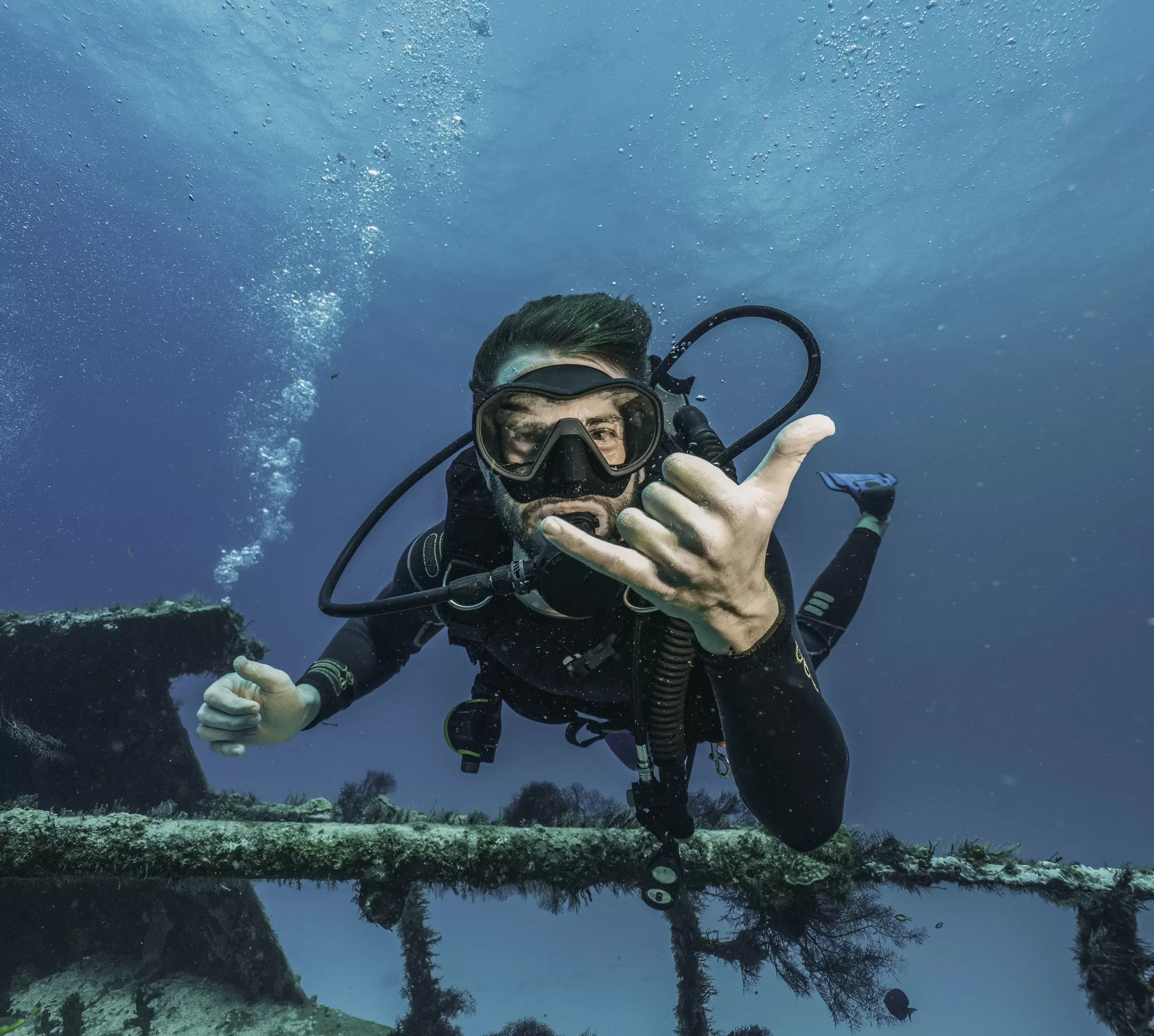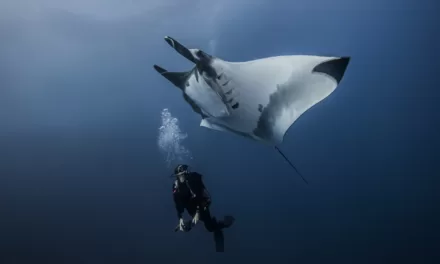Welcome to the world beneath the waves, where scuba diving not only unlocks mesmerizing marine vistas but also introduces a unique language peppered with acronyms. In diving, acronyms are more than mere shorthand; they are essential tools that streamline communication and enhance safety. As a professional diver and travel blogger, I’ve experienced firsthand how these compact terms can simplify complex concepts and equipment, making them easier to remember and apply, especially under the vast, blue expanse of the ocean. Understanding these acronyms is not just about diving deeper into the hobby; it’s about ensuring that every dive is as safe as it is enjoyable. Whether you’re a novice taking your first breath underwater or a seasoned diver exploring new depths, mastering this lingo is a crucial step in your scuba journey. So, let’s dive into the alphabet soup of scuba diving and unravel the meanings behind these ubiquitous acronyms.
Why Acronyms Matter in Scuba Diving
In the dynamic environment of scuba diving, acronyms serve as vital lifelines. They are ingeniously crafted to condense complex procedures and technical equipment into digestible bits. This linguistic efficiency is crucial, especially when communication underwater is limited to gestures and written slates. For instance, when a diver references their BCD (Buoyancy Control Device), it encapsulates a whole range of functions and checks into three simple letters. Similarly, acronyms like DAN (Divers Alert Network) aren’t just abbreviations; they represent critical resources and procedures that ensure diver safety and emergency responsiveness. Acronyms also play a significant role in education and training, where terms like PADI (Professional Association of Diving Instructors) and CESA (Controlled Emergency Swimming Ascent) are integral to learning and executing diving skills. These acronyms are the universal language among divers worldwide, facilitating swift, clear, and effective communication. This not only streamlines the learning process but also fortifies the safety protocols that keep the diving community safe and sound beneath the waves.
Basic Scuba Diving Acronyms
Diving into the basics, let’s start with BCD, standing for Buoyancy Control Device. This essential piece of gear allows divers to manage their buoyancy underwater – crucial for a stable and controlled dive. By inflating or deflating the BCD, divers can ascend, descend, or hover with ease, making it a cornerstone of underwater maneuverability.
Next up is SCUBA, the very acronym that defines the sport: Self-Contained Underwater Breathing Apparatus. This term encompasses the entire breathing system that enables us to explore the underwater world. The SCUBA gear, comprising the tank, regulator, and other components, is what allows divers to breathe underwater and stay submerged for extended periods.
Another pivotal acronym is PADI, which stands for Professional Association of Diving Instructors. As one of the world’s largest diver training organizations, PADI sets the standards for diving education and certifications. From your first breath underwater to advanced diving skills, PADI courses and instructors are integral to the journey of learning and mastering scuba diving.
Safety-Related Acronyms
When it comes to safety, acronyms are not just letters; they are lifelines. CESA, or Controlled Emergency Swimming Ascent, is one such critical term. It refers to a technique used by divers to ascend safely to the surface in an emergency, particularly if they’re out of air. This controlled ascent is a fundamental skill taught in early diving courses, emphasizing its importance in diver safety.
DAN, or Divers Alert Network, is synonymous with safety in the diving world. This global network provides emergency medical advice and assistance for divers in need, alongside a wealth of resources on dive safety. DAN represents a community’s commitment to ensuring every diver’s wellbeing, offering services like emergency hotlines, insurance, and vital research in dive medicine.
Both CESA and DAN highlight the paramount importance of safety in diving. Understanding these acronyms and their applications is crucial not just for personal safety but also for the well-being of your dive buddies and the broader diving community. In the world of scuba, being well-versed in these terms is as important as knowing how to use your gear – it’s all about making every dive a safe and enjoyable experience.
Equipment-Related Acronyms
In the realm of scuba equipment, several acronyms are key to understanding and using your gear effectively. AOW stands for Advanced Open Water, a level of certification that opens the door to more advanced diving equipment and deeper diving depths. This certification expands your skills and knowledge, enabling you to handle more complex diving scenarios and gear configurations.
The SPG, or Submersible Pressure Gauge, is an essential instrument that every diver needs to monitor. It displays the remaining air pressure in the scuba tank, a critical piece of information for managing dive times and ensuring a safe return to the surface. Keeping an eye on the SPG is a fundamental practice in diving safety.
NDL, or No Decompression Limit, is another crucial term in diving. It refers to the maximum time a diver can spend at a certain depth without needing to perform decompression stops during ascent. Understanding your NDL is vital for planning dives within safe limits, avoiding decompression sickness, and ensuring a safe and enjoyable dive experience.
Diving Certification Acronyms
Diving certifications are often abbreviated into acronyms that signify a diver’s level of training and expertise. OW stands for Open Water, the initial level of diver certification. This certification provides the foundational skills and knowledge for recreational scuba diving and is the first step in a diver’s education.
DM, or Dive Master, represents a significant advancement in a diver’s journey. As a Dive Master, a diver not only has extensive dive experience but is also trained to lead and supervise dive activities, assist with diver training, and ensure the safety of all participants.
IDC, or Instructor Development Course, is the gateway to becoming a PADI Instructor. This course hones a diver’s skills to a professional level and trains them to teach PADI courses. IDC graduates are certified to educate new divers, marking a transition from being a diving enthusiast to a mentor and leader in the diving community.
Each of these acronyms represents not just a badge of honor but a responsibility towards safe and responsible diving practices. They are milestones in a diver’s education, marking their growth, expertise, and commitment to the sport.
Commonly Misunderstood Acronyms
In the diving world, some acronyms can be puzzling, leading to misunderstandings. For instance, ‘BC’ is often thought to mean ‘Buoyancy Compensator’ when it actually stands for ‘Buoyancy Control’ in ‘Buoyancy Control Device (BCD)’. Another common mix-up is with ‘DIN’ and ‘yoke’ valves on tanks and regulators. ‘DIN’ (Deutsches Institut für Normung) refers to a type of valve screw mechanism, not a brand or style of diving. ‘Yoke’, on the other hand, is a clamp-style attachment for regulators. These nuances are crucial for understanding and correctly utilizing diving equipment.
How to Learn and Remember Diving Acronyms
Mastering diving acronyms can seem daunting, but with a few strategies, it becomes easier. Creating mnemonics or associative phrases can help remember complex terms. For instance, remembering ‘BCD’ as ‘Buoyancy Control Device’ can be linked to the phrase ‘Better Control Depth’. Regular practice and usage, especially during dive planning and debrief sessions, reinforce these terms. Diving forums and educational resources, like PADI’s website and DAN’s safety guides, offer great opportunities for continuous learning. Staying engaged with the diving community, through social media groups or local diving clubs, keeps you updated and helps in retaining these acronyms.
Conclusion
Acronyms are the lingua franca of the diving world, essential for clear communication and understanding in a sport where safety and precision are paramount. From basic gear terminology to complex safety procedures, these shorthand terms significantly enhance the scuba diving experience. I encourage every diver, novice or veteran, to familiarize themselves with these acronyms. Not only does this knowledge make for safer dives, but it also enriches your overall diving journey, connecting you more deeply with the fascinating world of scuba. Dive in, stay curious, and let these acronyms be your guide to the wonders beneath the waves.




